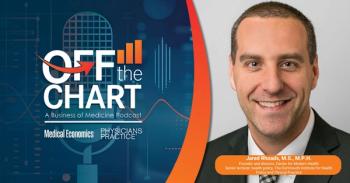
- August 10, 2018 edition
- Volume 95
- Issue 15
We must save Medicaid through a bipartisan effort
Despite deep philosophical differences between our two political parties, there is a uniquely American solution to saving Medicaid.
Editor's Note: Welcome to Medical Economics' blog section which features contributions from members of the medical community. These blogs are an opportunity for bloggers to engage with readers about a topic that is top of mind, whether it is practice management, experiences with patients, the industry, medicine in general, or healthcare reform. The opinions expressed here are that of the authors and not UBM / Medical Economics.
Medicaid was founded in 1965 to provide care for our most vulnerable. The program is funded by federal and state governments, administered by the states. However, because of dramatic increases in the population covered-2 percent at inception to today’s 22 percent (>74 million participants)-and ever-increasing expenditures per patient, there is agreement that with huge increases in cost, it cannot survive in its present form. According to CMS, total Medicaid spending as of 2016 was
Presently, state expenditures for Medicaid exceed that for primary and secondary education. This is disturbing because adequate education is the means by which the young can avoid needing Medicaid in their future. Budget limitations have created lower reimbursement rates for physicians and hospitals. This limits physician access (varying by state), resulting in continued use of expensive emergency departments for otherwise routine care. Low reimbursements have led hospitals to cover losses by negotiating higher reimbursements from private insurance. In many poorer rural areas this has not been possible, leading to hospital closures.
This “cost-shifting” causes higher premiums for employer-sponsored and other insurances, contributing in part to stagnation of salaries for many workers. In effect, this is a hidden tax to subsidize the program. Many studies have consistently demonstrated a lack of health outcome benefit for Medicaid patients. Recently, the Government Accountability Office claimed
Solutions are difficult as evidenced by recent attempts to save funds, in this case paying hospitals a yearly amount caring for Medicare/Medicaid patients, irrespective of usage, called global capitation. This has had the unintended consequence of seriously curtailing and endangering pediatric care. As a price-fixed, third-party program, individuals are removed from any cost signals. Despite these many criticisms, a few states that initially refused to expand their Medicaid program via the ACA expansion are now doing so, perhaps to capture the federal funds that are going to nearby states funded, in part, by their taxpayers. These states’ hospital associations are strong advocates to expand Medicaid, seen as a money stream in addition to already covering their costs by “cost shifting.” There is also the belief that insurance should be available to as many as possible. Others argue that insurance is not synonymous with care especially with Medicaid because of the findings of no improvement in outcomes and its huge state and federal costs.
With deep philosophical differences between our two political parties, is there a solution to saving Medicaid? Yes. There is a uniquely American solution. Let individuals decide between the present Medicaid and a proven successful plan that provides better care at far less cost. This alternative could be modeled after
Medicaid now is spending more than $7,000 per person; this alternative would cost significantly less, conserve government funds, and allow for personal choice. This should appeal to conservatives. It would also improve care of our most vulnerable and be available to more Americans. This should appeal to liberals. Importantly more resources could then be devoted to the future of our nation by putting more emphasis on educating our young, which should appeal to everyone.
Kenneth A. Fisher, MD, is an internist/nephrologist, teacher, author ("Understanding Healthcare: A Historical Perspective" and "In Defiance of Death: Exposing the Real Costs of End-of-Life Care"), and co-founder of Michigan Chapter of the Free Market Medicine Association.
Articles in this issue
over 7 years ago
Funny Bone: Work-life balanceover 7 years ago
How my life changed: transitioning to direct primary careover 7 years ago
How physicians are assisting peers to overcome burnoutover 7 years ago
Take a proactive approach to bad debtover 7 years ago
Artificial intelligence in primary careover 7 years ago
Manage practice workflow to reduce burnoutover 7 years ago
How to properly document and bill for venipunctureover 7 years ago
Restoring the joy in medical practiceover 7 years ago
Physician burnout led to my retirementNewsletter
Stay informed and empowered with Medical Economics enewsletter, delivering expert insights, financial strategies, practice management tips and technology trends — tailored for today’s physicians.














